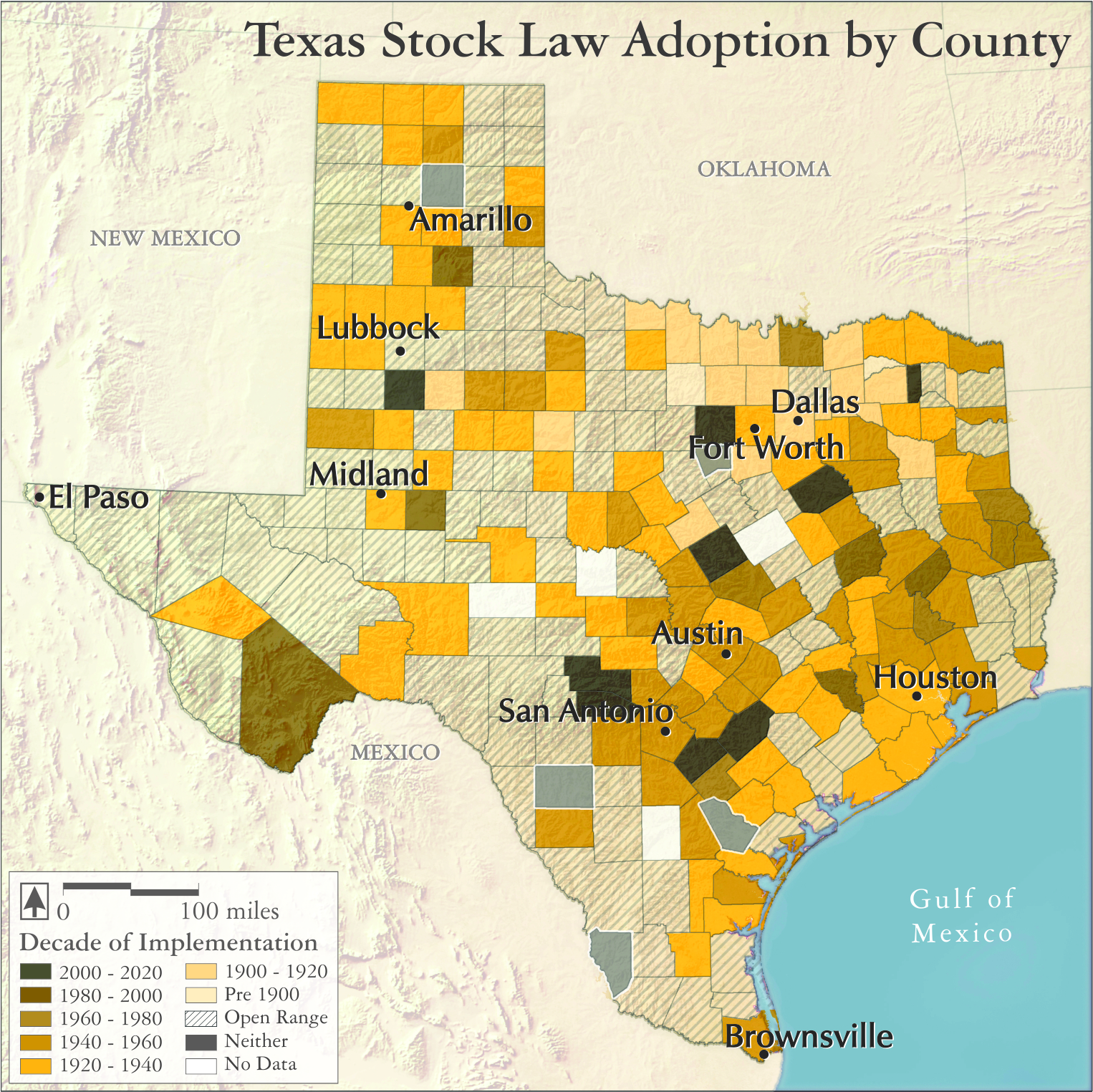
Stock Law & the Open Range
Since Joseph Glidden, Henry Sanborn and John Gates introduced barbed wire to Texas in the 1870s, the state has become more and more criss-crossed with fences.
However, the unfenced, open-range principle actually holds sway as the default common-law tradition in Texas. This idea dates back in Western culture some thousand years, when livestock owners had traditional “pannage” rights for their hogs to roam free and eat mast in the medieval forests of Northern Europe. This ancient principle was confirmed by the Texas Supreme Court in 1893, and proclaimed again in an Attorney General’s opinion in 2003.
Nevertheless, since 1876, the Texas Legislature has allowed counties (excepting 22 jurisdictions) to opt out of the open range system and adopt stock laws that require livestock owners to control their cattle, hogs, horses, mules, and other domestic animals. Pressed by large landowners irritated by free-ranging hogs, lobbied by motorists and train operators fearful of livestock left loose on rights-of-way, and promoted by city-dwellers embarrassed by herds wandering in their downtowns, stock laws began to pass in the 1920-60 period.
To date, 147 counties, nearly 60% of those in Texas, have passed stock laws, signaling the end of the legacy of the commons, of jointly-held access and use of land in the state.
Sources:
Clarendon Land, Investment & Agency Co. v. McClelland, 23 S.W. 576 (1893).
Donovan, Richard. 2008. Oral history interview conducted March 3, 2008 in Lufkin, Texas for the Conservation History Association of Texas.
Matthiesen, Wickert & Lehrer, S.C.. 2020. Texas Stock Laws by County.
Sitton, Thad. 1995. Backwoodsmen Stockmen and Hunters along a Big Thicket River Valley. University of Oklahoma Press.
Texas Agriculture Code, Chapter 143.
